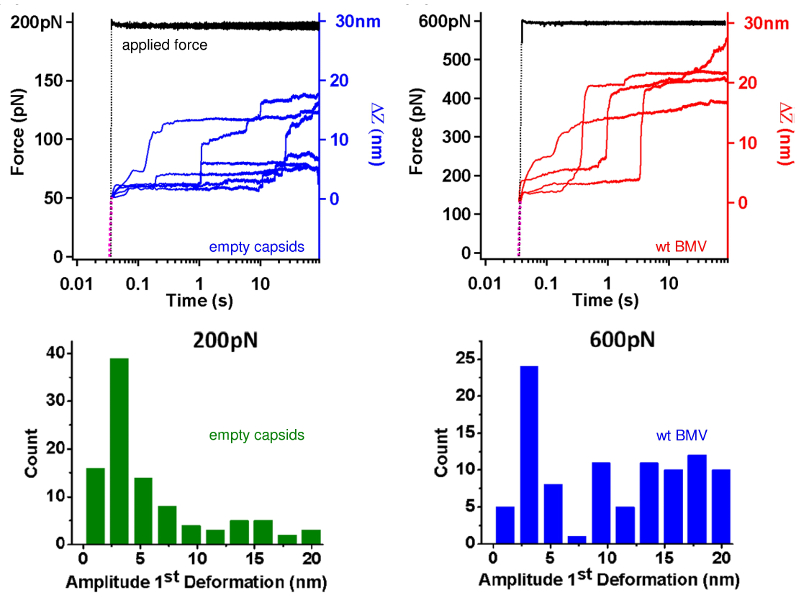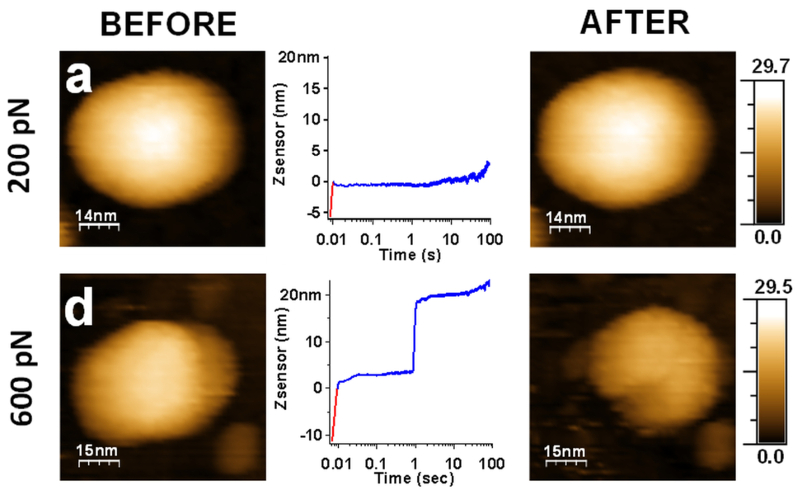AFM Systems
AFM Accessories
Learning
Contact Us
 Part of the Oxford Instruments Group
Part of the Oxford Instruments Group
AFM nanomechanical techniques showed how single icosahedral virus particles responded to constant compression over timescales up to a minute. The results provide insight into virus deformation pathways and highlight the role of defects in the crystalline virus shell.

Viruses undergo morphological changes in response to mechanical and chemical cues throughout their life cycle. Further information about these processes will help elucidate how viruses interact with the interfaces of host cells. The temporal limitations of simulation techniques mean that experiments over the full range of relevant timescales are especially needed.
To this end, a team of researchers in Spain and the U.S. deformed single particles of empty capsids and wild type (wt) brome mosaic virus (BMV) using AFM nanomechanical techniques. Particles subjected to constant uniaxial compression exhibited sudden drops in height, even at stresses well below the yield point. Morphology images helped establish that events occurred only above a threshold force, whic depended on capsid type.
Simulations that modelled the outer shell of the virus as a spherical crystal showed the jumps could be explained by dynamic rearrangements of lattice defects. By highlighting the importance of topological defects in virus deformation, the results improve our understanding of how viruses react to different mechanochemical signals.

Creep compliance tests were performed on BMV particles in a droplet of buffer solution using force curve methods. Stress was applied with the AFM tip, and the Z actuator position needed to keep the stress constant was recorded over a time span from 10−3 to 102 s. Images of particle morphology before and after deformation were acquired in tapping mode. With an noise floor half that of other AFMs, Cypher AFMs provide unmatched stability for sensitive force measurements. Accuracy was further ensured by temperature control within ±0.5 °C, which kept drift typically less than 2 nm/min.
Citation: M. Hernando-Pérez, C. Zeng, M. C. Miguel, and B. Dragnea, Intermittency of deformation and the elastic limit of an icosahedral virus under compression. ACS Nano 13, 7842 (2019). https://doi.org/10.1021/acsnano.9b02133
Note: The data shown here are reused under fair use from the original article, which can be accessed through the article link above.
